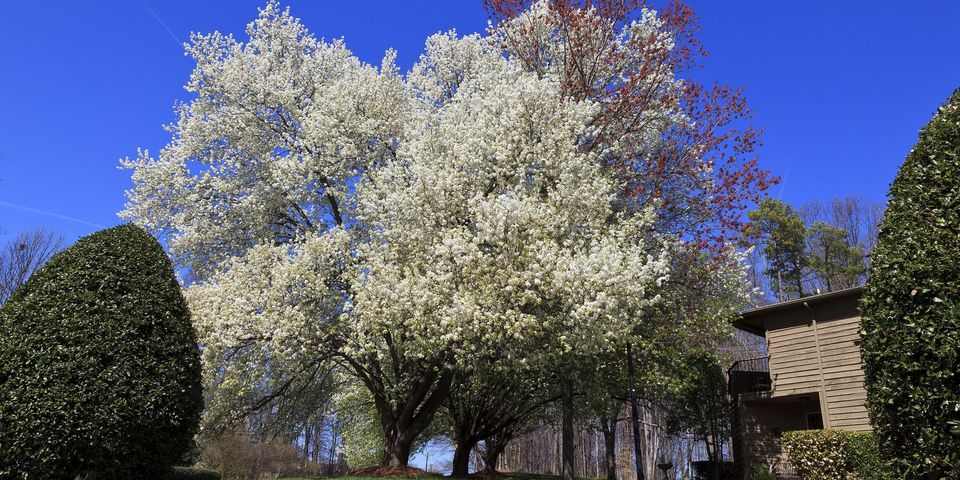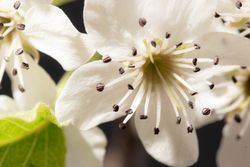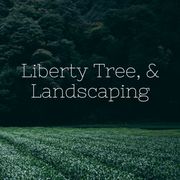
Trees give your yard beauty, shade, and fresh, clean air. However, some trees, like the Bradford pear tree, simply don’t belong on your property. Here’s why landscaping experts say to avoid this tree and what to do if you already have one.
What Is a Bradford Pear Tree?
The Bradford pear is a deciduous tree, meaning it loses its leaves annually, going dormant in winter. In early spring, it produces green, heart-shaped leaves and clusters of white flowers that feature five petals. In late spring and summer, it produces small, round, greenish-brown fruits, and in the fall, its leaves turn reddish-purple.
The tree’s bark is reddish-brown when it’s young and gray-brown when it’s mature. It reaches about 30 to 50 feet in height and 20 to 30 feet wide.
Why Should You Avoid Planting One?
 Many people enjoy the Bradford pear’s white flowers in spring and gorgeous leaves in fall. However, the tree is not recommended for homeowners for the following reasons:
Many people enjoy the Bradford pear’s white flowers in spring and gorgeous leaves in fall. However, the tree is not recommended for homeowners for the following reasons:
- Weakness: A Bradford pear features very weak branches that don’t stand up well against strong winds. They can snap and fall easily, especially as the tree ages. Fallen branches can ruin your yard’s appearance, damage power lines, and even injure someone. Older Bradford pears are prone to splitting, and the tree itself could fall, increasing the risk of further damages and injuries.
- Smell: The white flowers produced in the spring come with an odor that many people compare to rotting fish. If you’re looking for a tree that pleases your sense of smell, skip the Bradford pear.
- Dead Grass: The Bradford pear’s branches are so dense that they often block sunlight from reaching the grass below. When grass doesn’t receive enough nutrients from the sun, it will turn brown and die.
- Suckers: Over time, Bradford pears tend to produce small stems or sprouts (called “suckers”) around the base of the trunk. They grow rapidly, threatening your yard’s appearance and making it difficult to walk near the tree.
- Problematic Fruit: The Bradford pear’s fruits can’t be eaten by humans and can be poisonous to dogs. They’re also very hard and can wreak havoc on your lawn mower.
What Should You Do If There’s Already One on Your Property?
If you have a Bradford pear tree on your property, call a landscaping company to safely remove it. Because the tree’s roots and shoots can cause it to grow back, you should also schedule a stump removal. This service prevents the tree from returning so you can replace it with a more beneficial tree.
If you’re ready to remove a Bradford pear tree on your property, turn to the team at Liberty Tree Lawn & Landscaping. These landscaping contractors are based in Dayton, OH, and provide tree and stump removal, as well as trimming and pruning services. They have over a decade of experience and will remove your tree with precision and care. To learn more about how they can help and to schedule a free estimate, call (937) 630-2743.
About the Business
Have a question? Ask the experts!
Send your question

